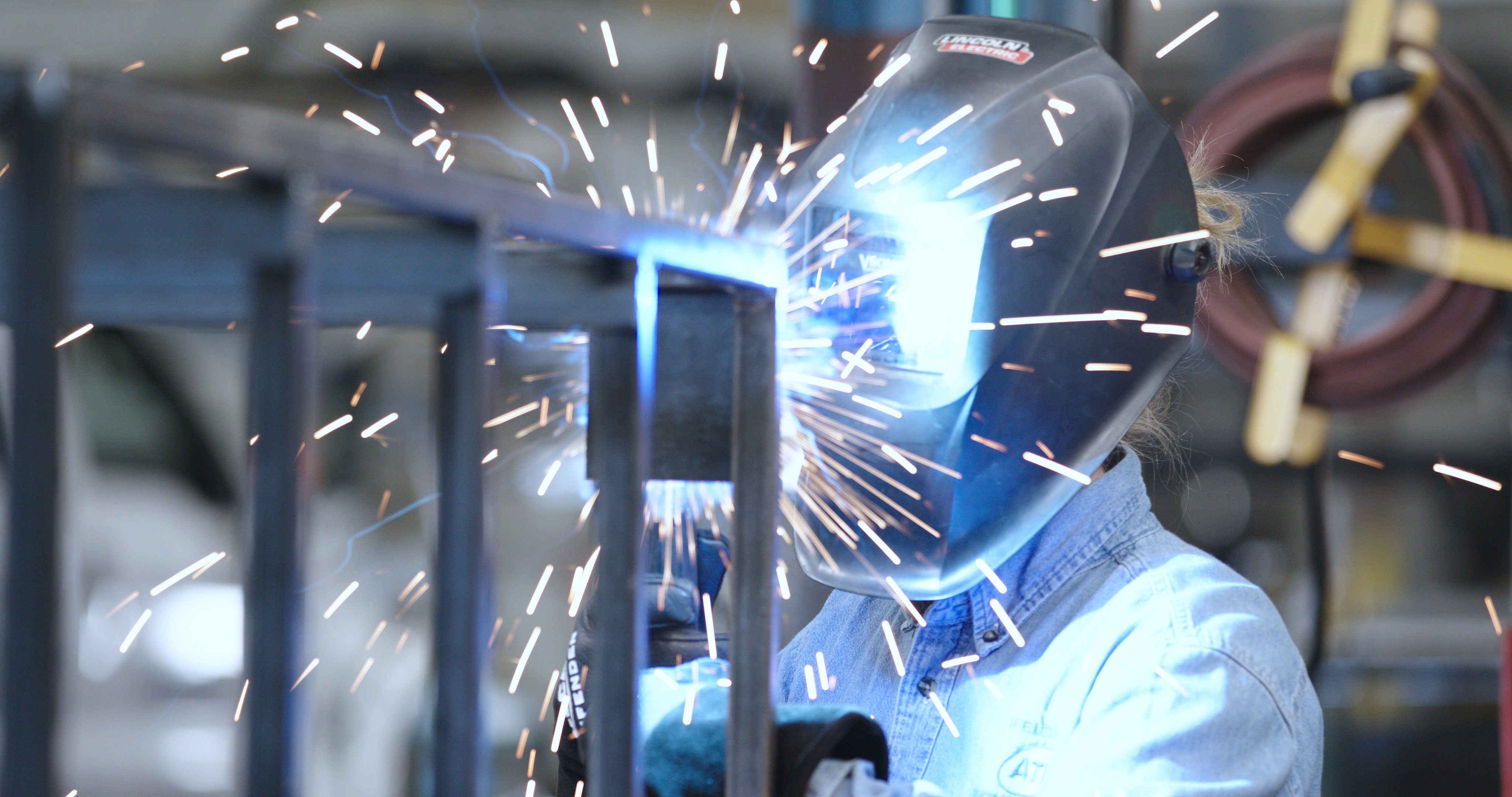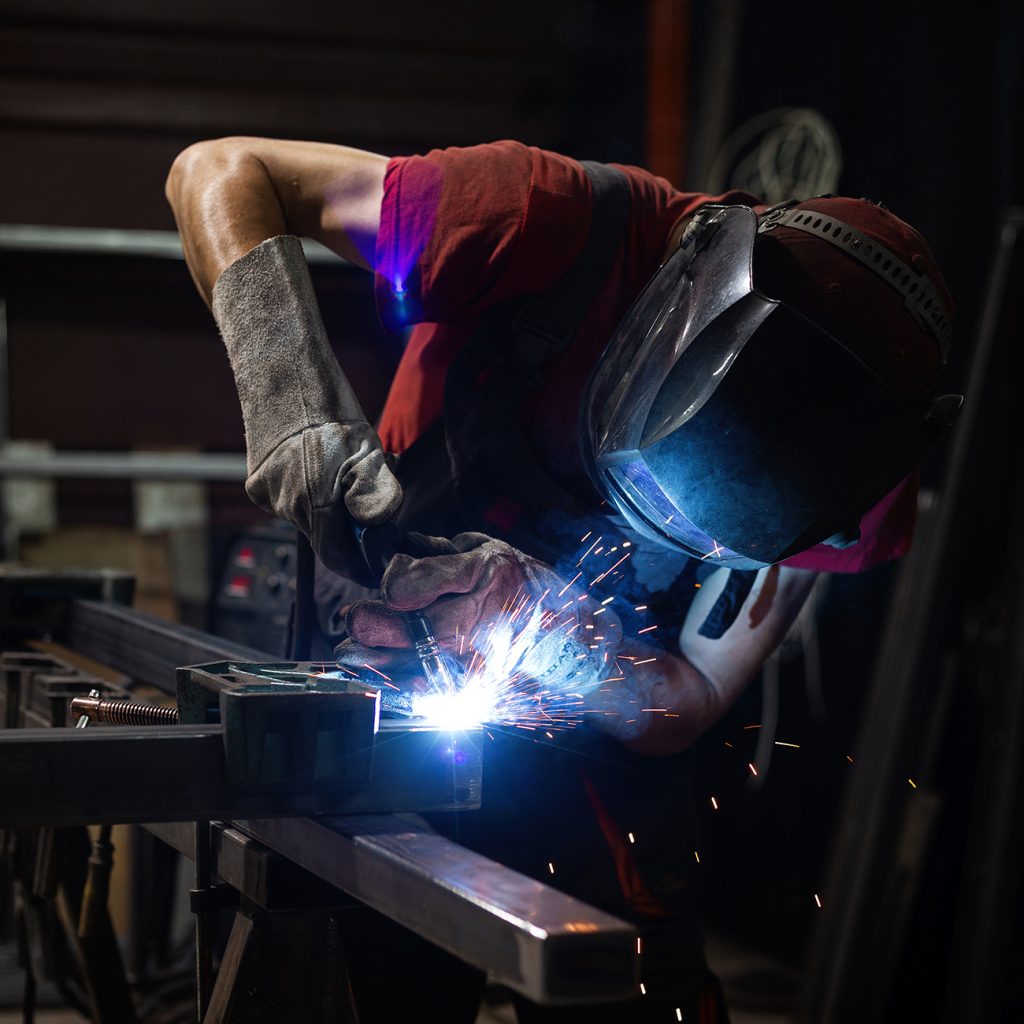All Regarding Welding: Key Insights Into Techniques and Best Practices for Success
Welding encompasses a selection of techniques, each matched for specific products and applications. Understanding these approaches, such as GMAW, SMAW, and TIG, is necessary for accomplishing perfect outcomes. The appropriate equipment and safety methods can not be overlooked. As prep work and repairing play critical roles in the welding process, mastering these components can considerably improve the quality of the end product. What are the essential aspects that assure a successful weld?
Understanding Various Welding Methods
Welding techniques incorporate a selection of techniques, each fit to certain applications and products. Among the most usual strategies are Gas Metal Arc Welding (GMAW), Protected Metal Arc Welding (SMAW), and Tungsten Inert Gas Welding (TIG) GMAW, also recognized as MIG welding, is prominent for its rate and versatility, making it optimal for slim products. SMAW, or stick welding, is preferred for its simplicity and efficiency in outdoor settings, specifically with thicker steels. TIG welding provides accuracy and control, making it ideal for detailed work and non-ferrous metals (Montana Mobile Welding and Repair). Each technique has its distinct benefits and considerations, enabling welders to select the most effective technique based upon the project's requirements, material type, and wanted results. Understanding these techniques is vital for effective welding
Vital Welding Devices and Tools
While numerous welding strategies require certain abilities, the appropriate tools and tools are similarly crucial for attaining quality outcomes. Crucial welding equipment includes welding makers, which vary depending upon the method-- such as MIG, TIG, or stick welding. Safety gear, consisting of gloves, helmets, and aprons, warranties safety and convenience throughout the procedure. Additionally, components and clamps help protect materials in area, making sure precision in welds. Consumables like welding rods, wire, and protecting gas are additionally important elements that influence the top quality of the weld. Tools such as grinders and cutters promote surface area preparation and post-weld ending up, adding to a professional end result. Spending in high-grade tools inevitably improves the performance and efficiency of welding projects.
Security Practices in Welding
Correct security methods are crucial in the welding industry to secure workers from prospective hazards. Welders should wear appropriate personal protective equipment (PPE), consisting of helmets with correct shading, handwear covers, and flame-resistant clothing. Adequate ventilation is crucial to minimize exposure to damaging fumes and gases generated during the welding process. In addition, workers must be learnt the proper handling of welding tools to avoid accidents. Fire precaution, such as maintaining flammable materials far from the welding location and having fire extinguishers conveniently available, are essential. Regular assessments of equipment and work areas can aid identify prospective risks prior to they cause crashes. By adhering to these safety and security methods, welders can create a more secure working setting and minimize threats associated with their profession.
Preparing Materials for Welding
Preparing materials for welding is a vital step that significantly influences the high quality and stability of the final item (Montana Mobile Welding and Repair). Correct prep work involves cleaning up the surface areas to eliminate pollutants such as dirt, oil, and corrosion, which can compromise the weld. Strategies such as grinding, sanding, or making use of solvents are commonly utilized to accomplish a tidy surface. Additionally, guaranteeing that the materials mesh snugly is crucial; voids can cause weak welds. It's additionally essential to take into account the positioning and positioning of the elements, as this will certainly affect the ease of welding and the last outcome. Lastly, selecting the ideal filler product and making sure compatibility with the base steels is crucial for achieving strong, sturdy welds
Tips for Getting High-Quality Welds
Achieving premium welds calls for focus to detail and adherence to finest practices throughout the welding process. Proper joint preparation is essential, ensuring surface areas are clean and totally free from pollutants. Selecting the appropriate filler material and welding technique based upon the base steels is critical for ideal bonding. Maintaining consistent traveling rate and angle while welding can promote and prevent flaws harmony. Furthermore, controlling warm input is essential; excessive heat can result in bending and weakened joints. If essential, on a regular basis evaluating the welds during the procedure enables for instant changes. Using appropriate post-weld therapies, such as cleaning and stress relief, can boost the resilience and stability of the weld, ultimately guaranteeing a successful result.
Fixing Common Welding Issues
Welding frequently offers challenges that can influence the top quality and integrity of the end product. Typical problems such as porosity, inconsistent weld grains, and getting too hot can arise, each needing particular fixing techniques. Understanding these problems is vital for welders to enhance their skills and attain perfect outcomes.
Porosity Issues Discussed
Porosity can often be ignored, it remains a crucial problem in welding that can endanger the stability of a finished product. Porosity refers to the visibility of tiny gas pockets within the weld grain, which can lead and deteriorate the joint to early failing. This issue usually occurs from impurities, moisture, or inappropriate securing gas protection throughout the welding procedure. To mitigate porosity, welders should validate that the base materials are completely dry and tidy, utilize ideal shielding gases, and maintain consistent welding parameters. On a regular basis examining the equipment and environment can additionally aid identify possible issues before they materialize in the weld. Resolving porosity properly is crucial for attaining solid, resilient welds dig this that satisfy top quality standards.

Inconsistent Weld Beads
Inconsistent weld beads can greatly impact the top quality and stamina of a finished product. Various factors add to this problem, consisting of inappropriate travel speed, incorrect amperage setups, and inconsistent electrode angles. When the welder moves as well promptly, a grain may show up narrow and lack infiltration, while relocating also slowly can trigger excessive accumulation. Furthermore, utilizing the incorrect amperage can cause either damaging or extreme spatter, both of which concession weld stability. The welder's technique, such as irregular lantern movement, can also lead to irregular bead look. To reduce these troubles, welders need to concentrate on keeping consistent, regulated movements and guaranteeing appropriate tools setups to attain uniformity in their welds. Consistency is key to accomplishing trustworthy and solid welds.
Overheating and Bending Issues
Excessive heat throughout the welding process can result in substantial overheating and warping problems, influencing the structural integrity of the workpiece. These problems typically materialize as distortion, which can compromise placement and fit-up, making additional assembly challenging. Elements adding to overheating include the choice of welding criteria, such as voltage and take a trip speed, as well as the sort of material being bonded. To minimize these problems, welders must keep consistent traveling speed and appropriate warm input while keeping an eye on the workpiece temperature. Furthermore, preheating or post-weld heat therapy can help relieve mig and stick welder stress and anxieties brought on by rapid air conditioning - Belgrade Welding. Regular examination and adherence to finest techniques are necessary in stopping overheating and guaranteeing the longevity and reliability of bonded frameworks
Frequently Asked Inquiries
What Are the Job Opportunities in the Welding Sector?
The welding market provides diverse occupation possibilities, consisting of settings as welders, assessors, designers, and instructors. Specialists can work in production, building, aerospace, and vehicle industries, benefiting from strong demand and affordable salaries in numerous duties.
How Can I Boost My Welding Rate Without Compromising Quality?
To boost welding rate without giving up quality, one ought to practice efficient methods, keep devices, maximize setups, and boost hand-eye coordination. Regular training and looking for comments can additionally considerably contribute to attaining faster, top notch welds.
What Certifications Are Available for Welders?
Various accreditations exist for welders, including those from the American Welding Culture (AWS), the National Center for Building Education And Learning and Research Study (NCCER), and various industry-specific companies. These credentials boost employability and show ability efficiency.
Just How Does Welding Impact the Characteristics of Metals?
Welding influences the buildings of metals by modifying their microstructure, which can lead to changes in hardness, strength, and ductility. Warm input and air conditioning rates throughout the procedure greatly impact these product qualities.
Can I Weld Dissimilar Metals With Each Other?
